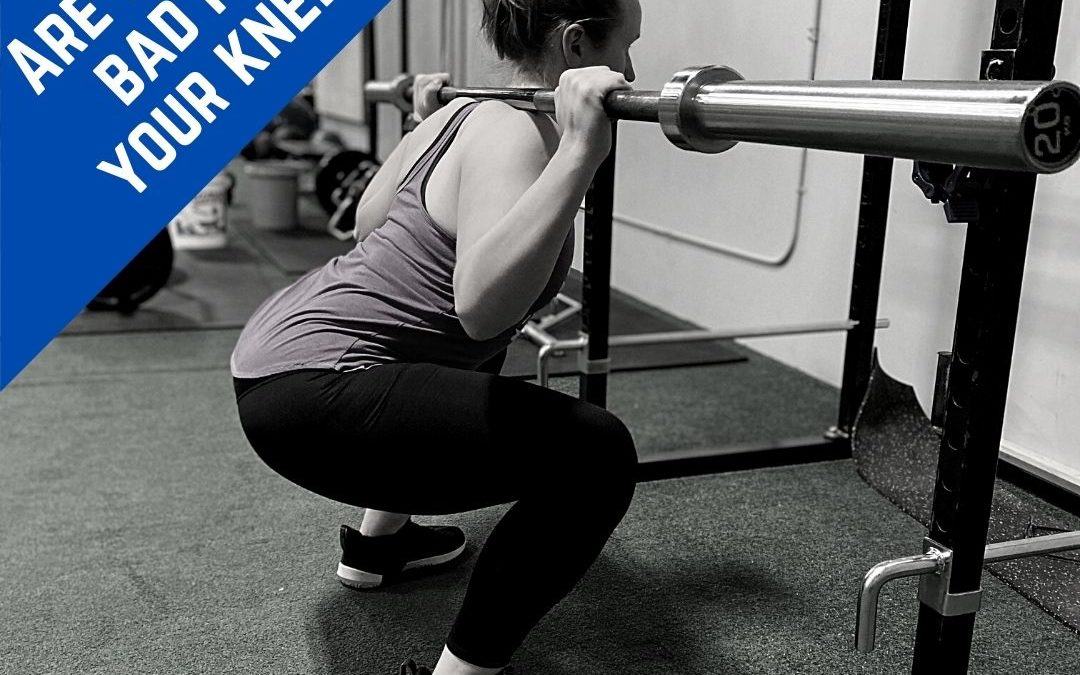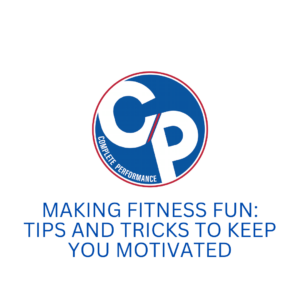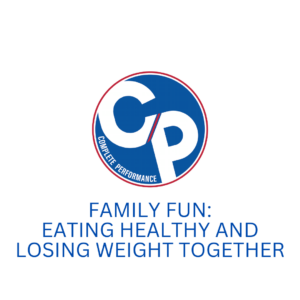Short answer: No.
But the short answer wouldn’t make for a very good blog, would it?
A long, long time ago, squats were thought of as one of the best metrics for strength. There were hundreds of variations of lifting heavy objects up and either walking them over or throwing them over something.
At some point, the barbell came along, and individuals loaded up the bar with more and more weight to prove who was the strongest of them all.
Yet somewhere along the way, squats became a blacklisted exercise.
“They’re bad for your knees.”
“They’re the reason your knees hurt.”
“Squatting below parallel shreds all the ligaments and tendons in the knee.”
Here’s the problem – there’s no research to solidly back it up.
A variety of research has been done on this hot button exercise, and squats with proper technique, the correct amount of resistance, and appropriate volume does no damage to the knees. In fact, it might HELP them.
So, then why do your knees hurt during and after squats?
The pain likely stems from something OUTSIDE of the actual knee joint.
How to Identify the Source of Your Knee Pain
If the pain is felt in the knee, but not actually coming from the knee, then it’s important you do some work to find out where it’s really coming from. Here are 3 ways to identify the source of your knee pain:
Assess Movement Pattern
Take a look at what your body does throughout the squat movement.
Personally, I recommend a video and another person’s assessment, so you can see for yourself as well as utilize the eyes of another to identify things you might not see or feel.
In addition, you should look from a variety of angles – front, both sides, and back.
Look at yourself top to bottom, and go through a checklist like this:
- Feet
- Equal distance from the midline and front to back.
- Comparable toe angle on each side and appropriate for the individual.
- Knees & Shins
- Knees open up the same amount, but are NOT leading the squat pattern.
- Shins gently slide forward without drawing the knees over the toes.
- Hips
- Hips move back and down while simultaneously opening to lower the torso.
- Spine
- Spine stays in a neutral zone throughout the lowering and raising.
- Shoulders & Chest
- Stay tall and upright to support the spine staying in the neutral zone.
- Rise simultaneously to the hips.
- Head
- Stays in a neutral position and does not look up, down, or off to either side.
Look at the Joint Above & Below
More than likely, the pain felt in the knee is triggered by an inefficiency, imbalance, or injury to a joint above or below.
The knee only moves in one direction – forward and back (flexion and extension, if you’re a nerdy folk like myself).
The joints above and below, the ankle and hip respectively, move in a number of directions, which make them much more likely to present an inefficiency, imbalance, or injury.
We just might not realize it…
So, when you go through your movement patterns, give a little extra love and focus to your ankles and hips.
If you know you’ve suffered a number of injuries or general wear and tear on those joints, take extra care of them in your warm ups, cool downs, and recovery work.
If you want a GREAT assessment of the ankles and hips as it relates to knee pain, I recommend checking out Rebuilding Milo by Dr. Aaron Horschig and Kevin Sonthana.
Consult With a Professional
If you go through the first two steps and can’t find any major issue OR you just know you’ve done something to your knee that requires the assistance of a medical professional, please do so.
Above all, I am not a doctor; therefore, they have significant more knowledge, resources, and support to guide you to pain-free squats.
How to Rehabilitate
Once you know where the pain is really coming from, what’s next?
REHAB!
Which never once has sounded cool, but I promise you it’s not as boring as you think and it’s VERY worth it.
I’ve broken it down to 3 simple pieces to use throughout your day.
Daily Activation Work
Have you ever thought about what happens to your muscles overnight?
It’s not pretty!
Your muscles don’t move too much while you sleep, so the blood sitting within them gets sucked of all its oxygen and nutrients, which is why you wake up stiff and tight.
The best thing you can do for sore and stiff muscles that you’re trying to rehabilitate is to give them some fresh juice first thing in the morning!
If you’ve been provided some mobility and activation exercises (provided in all of our FIT workouts), use them first thing in the morning!
You don’t need to do a full workout, but choose 2 to 3 exercises that you can commit to doing every morning.
Move your body!
My favorites?
- Around the Clocks
- Hip Flexor Stretch
- Glute Bridges
- Dead Bug – Bottom Half Only
Daily Recovery Work
Now, have you ever thought about what happens to your muscles throughout the day?
YIKES! Do they take a beating!
Think about if you let your muscles take a beating, then you go to bed and let them stiffen up all night – oh wait, that’s what you do now…
Well, you can’t control what happens to them overnight, but you can control what happens to your muscles during the day.
That’s why I recommend some daily recovery work!
End your day with 2 to 3 stretches or recovery measures to flush the toxins and build up from the day and leave it with fresh blood for evening time.
My favorites?
- Foam Roll or Lacrosse Ball
- Hip Flexor Stretch
- Glute & Piriformis Stretch
- Adductor Stretch
Don’t Skip the Warmups
Activation and recovery work is important, but it pales in comparison to the work you do before a workout.
Your warmup is your opportunity to check in with your body – find out how it’s moving, turn on the appropriate muscles, lock down on your technique before adding resistance.
Now, it’s hard even for me to stick with warming up, especially, when I’m busy and crunched for time.
I don’t have the magic words to make you enjoy working out or keep the motivation up, but if you’re tired of knee pain (or any pain) isn’t that enough?
My Favorite Squat Variations for Knee Pain
If you follow the information in this blog, the pain doesn’t go away right away.
Therefore, in the meantime, here are a few squat variations I use with clients to reduce knee pain.
Box Squats
These allow you to give extra attention to the technique and add slightly more load to the glutes and hamstrings and release some of the pressure from the quads and knees.
Counter-Balance Squats
These squats are great for targeting the core during squats to help maintain an upright posture and not add extra load to the knees.
Tempo Squats
Another great way to focus on technique and gradually load the glutes and hamstrings as you lower into a squat.
Oh, and if you want a full workout program that allows for flexibility and individualization to accommodate any aches and pains, CLICK HERE for 7 days FREE of our signature FIT Program.
About The Author
Jordan Davies is the Co-Owner of Complete Performance. Jordan has her B.S. in Exercise Science and Psychology, and her M.A. in Holistic Health Studies. She is a CSCS certified strength and conditioning coach, and a PN-1 and NCI-1 certified nutrition coach. She loves to study how the human body needs to be moved and nourished and making that fit to your unique lifestyle. Click Here Now to Apply for Coaching with Jordan.




